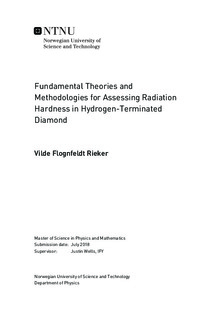| dc.description.abstract | The origin of conductivity in hydrogen terminated diamond, and the effect of MoO3 deposition is explained. Further, the various effects that can be induced upon particle irradiation and the mechanisms behind them is elaborated. MoO3 was deposited on two diamond Hall bar samples, which was then exposed to 3.5 keV electrons and 5 keV helium ions. The I-V characterization before and after exposure showed a decrease in conductivity in both cases, which was most likely caused by desorption of hydrogen. However one of the devices that was exposed to helium ions attained a strong increase in conductivity. Raman analysis of the sample suggested that graphitization maybe the cause of this effect. Possible shortcomings in the experimental methods have been identified and elaborated, which will serve as a stepping stone for future analysis. | |

